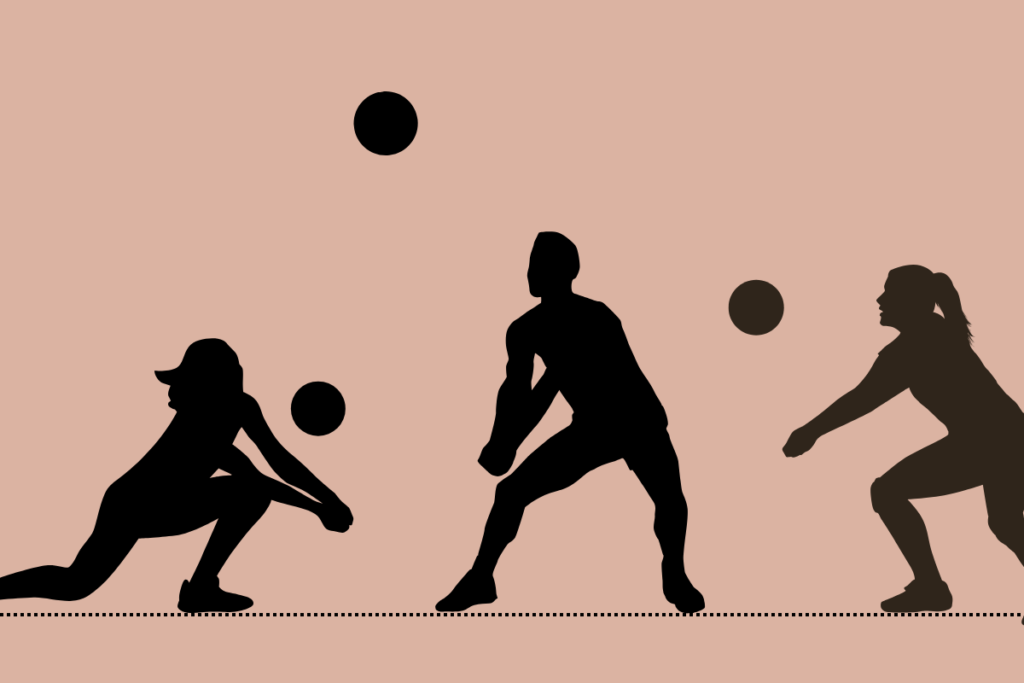Hey All, Future Volleyball star—
Today, I will talk about the most crucial skill in volleyball, its bump. You have probably seen players, expertly passing the ball with their forearms and thinking “How do they make it look so easy?” Do not worry, we are here together to break it down.
As soon as you finish this guide, you will feel confident enough to try it yourself.
The bump is also known as a forearm pass. It is a core skill in volleyball. Bump is primarily used to receive serves or handle attacks, setting up your team for the next move. Without a strong bump, it’s hard to maintain control during the gameplay.
Tools for bumping
Let’s be honest, no one can become an expert overnight. But with some practice and the right essentials, you can do it:
- Quick reflexes – The ball is not going to wait for you, so better be ready.
- Strong arms – Build strong arms to handle powerful serves and spikes.
- Teamwork – Communicate with your teammates to avoid confusion.
- Focus – Keep your eyes on the ball and predict its movement.

Getting ready to bump
Posture – Place your feet a comfortable distance apart, about shoulder width for balance. Bend your knees slightly, like you are preparing to sit on a high stool. Now lean slightly forward, keeping your weight on the balls of your knees. This posture gives you flexibility and readiness to move into action. Keep your upper body loose but aligned, with no stiffness. It is the foundation of a bump, so make it strong and steady.
Avoid these common mistakes:
- Too rigid – Standing too stiffly can limit your movement and make you fall over during quick plays.
- Flat-footed – Don’t let your heels bear all your weight as it slows down your reaction time.
- Overbending – A deep squat might seem stable, but it restricts movement. Keep it light and balanced.
Body alignment – Proper body alignment helps you control where the ball will go and ensures your team stays in sync. Your shoulder should be slightly angled in the direction you want the ball to travel. Keep your chest open but not puffed off. Your core muscles maintain control and balance as they keep you stable, even when the ball comes at you unexpectedly.
Avoid these common mistakes:
- Eye connect – Avoid looking around or down at your feet, as it is noticed that your body follows where your eyes go. It will impact your alignment and timing.
- Overtwisted – If your shoulder and hips are misaligned then there is a high chance of sudden change in direction (i.e., wrong direction).
- Flat alignment – We often see players facing sideways or perpendicular to the net, this usually leads to your ball being too far off the net.
Hand position – Start folding your hands together. Place one hand inside the other, press your thumb side by side, and point them downwards to the ground to maintain the alignment. This hand position ensures the ball has an even and flat surface to bounce off. Now extend your arms forward, keep them straight.
Remember- Tension in your hands or arms can ruin your bump, so relax your grip and let your arms naturally extend from your shoulders.
Avoid these common mistakes:
- Locked Elbows – Do not lock your elbows, so that your arm will be flexible and ready to absorb the ball’s impact.
- Loose hands – If the grip is too relaxed, your platform will not be stable there to ensure your hands stay folded together firmly.
- Angled platform – Tilted arms can send the ball flying sideways. Practice keeping your arm stable.
Tips to practice
Try this exercise to perfect your hand position. Hold a volleyball in your clasped hands, keeping your thumb aligned. Extend your arms and check in the mirror to ensure your platform looks flat and steady. Repeat till you feel perfect. This hand positioning can guide your ball in exactly the direction where it needs to go.
Pair up with your partner and pass the ball back and forth. See how long you can keep it going.
Have someone toss the ball randomly, and practice moving into position quickly.
Focus on the ball – Maintain a sharp focus on the ball from the moment it is served. Do not give only the look but also observe its movement as it arcs in the air. Visualize where it’s going to land and accordingly place your position before it reaches you. Pay attention to the ball’s speed and spin to predict its path. For example:
- A float serve might move unpredictably whereas the topspin serve will drop quickly.
Pay attention to the server’s hand movements and body language, as these can often indicate the ball’s direction. Stay composed and respond quickly without any panic.
The court buzzes with excitement and noise, so it’s important to train yourself to tune out distractions and concentrate on the ball. If you are struggling, then practice drills (e.g. – Toss the ball against the wall and track it as it bounces back) to gather attention.
How to execute a perfect bump?
Let the ball hit the flat surface of your forearms. Avoid swinging your arms as if you are hitting a tennis ball. Now with the help of your knees and legs provide the upper force needed to control the pass. For example, as the ball reaches, bend your knees slightly and push upwards as you make contact. This will help you to control the ball and direct it to the target. Slightly turning the shoulders and aligning the arms can make a big difference in the accuracy of the bump.
Remember – The actual force comes from your legs, not from arms.
How does bumping change the game?
Imagine receiving a tricky serve or an intense spike. A well-executed bump ensures the ball lands right on the setter’s hand, setting the stage for an unstoppable attack.
Scenario 1 – When receiving serves – The bump gets the ball to your setter in a controlled way.
Scenario 2 – When digging spikes – Save the hard hits with a steady bump.
Scenario 3 – When transitioning – Keep the play alive and set your team up for the next level.
A controlled bump gives your team a better chance of executing the next steps, whether it’s setting up a spike or maintaining the rally. This builds a good foundation for success on the court.
This is how your journey begins. The bump might seem tricky at first, but remember practice, passion, and dedication are your allies! Every great volleyball player begins exactly where you are now. So keep working on the bump, stay focused, and don’t forget to live the moment. Celebrate every little win. Whether it is a perfect pass in practice or mastering your posture. Each step brings you closer to progress. You are on the right path to becoming an amazing volleyball player.

